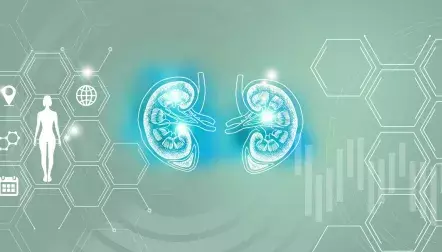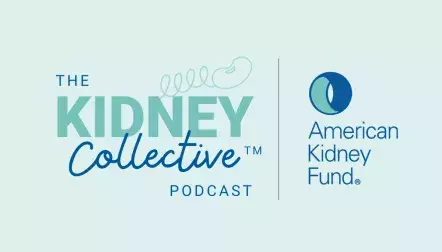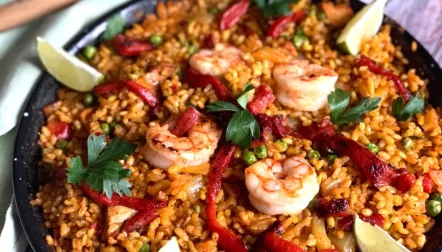
Kidney-friendly eating plan

- Medically reviewed by
- AKF's Medical Advisory Committee
- Last updated
- November 5, 2025
When you have kidney disease, it is important to watch what you eat and drink because your kidneys cannot remove waste products as well as they should. A kidney-friendly eating plan can help you stay healthier and slow down damage to your kidneys. This webpage is for people who have Stages 1 to 4 of chronic kidney disease (CKD) and are not on dialysis.
Everyone is different and has different nutritional needs. Use this information as a guide. Work with a dietitian to create a kidney-friendly eating plan that is right for you.
What is a kidney-friendly eating plan?
A kidney-friendly eating plan is a way of eating that helps you stay healthy and can slow down damage to your kidneys. It includes foods that are easy on your kidneys and limits other foods and fluids so certain minerals in those foods, like potassium, do not build up to high levels in your body.
How can I create a kidney-friendly eating plan that is right for me?
Ask your doctor to refer you to a dietitian (someone with special training in food and nutrition to know which foods are right for people with kidney disease). You can talk to a dietitian about the foods you enjoy or any special requirements you have (for example, you are vegetarian or have food allergies) and they will help you create a kidney-friendly eating plan that is right for you and includes the foods you enjoy.
Always talk to a dietitian before increasing or decreasing your daily intake of certain foods or nutrients.
Medicare and many private insurance plans pay for a certain number of visits with a dietitian each year. Call your insurance company to ask if your plan covers medical nutrition therapy (MNT) with a dietitian. MNT is an approach to treat kidney disease through a tailored nutrition plan. As part of MNT, a dietitian will review your current eating habits, create a healthy eating plan, that includes your preferences, and help you overcome eating challenges.
Learn more about working with a dietitian to create and following a kidney-friendly eating plan
Why is a kidney-friendly eating plan important?
A kidney-friendly eating plan helps you manage your kidney disease and slow down damage to your kidneys. It does this by preventing certain minerals from building up in your body, which is important because your kidneys do not work as well to remove waste products from your body.
A kidney-friendly eating plan can also help prevent other serious health problems and controls high blood pressure and diabetes, which can prevent kidney disease from getting worse.
It also ensures that you get the right balance of nutrients to help you:
- Have energy to do your daily tasks
- Prevent infection
- Build muscle
- Stay at a healthy weight
How can I follow a kidney-friendly eating plan?
Your kidney-friendly eating plan may change over time but will always give you the right amount of key nutrients.
- Protein: One of the nutrients that gives you energy. Your body needs protein to grow, build muscles, heal and stay healthy.
- Fat: Fat is another one of the nutrients that gives you energy. Your body needs fat to carry out many jobs, such as using vitamins from your food and keep your body at the right temperature.
- Carbohydrates or "carbs": Your body's main source of energy. Your body can more easily convert carbs into energy than protein and fat.
Work with your dietitian to follow the steps below for a kidney-friendly eating plan.
Eat the right amount and the right types of protein
Having too little protein can cause your skin, hair and nails to be weak. But having too much protein can make your kidneys work harder and cause more damage. This happens because when your body uses protein, it makes waste products that your kidneys must filter. To stay healthy and help you feel your best, you may need to adjust how much protein you eat.
The amount of protein you should eat depends on your body size, activity level and health. Your doctor and dietitian may have you limit protein or change the type of protein you eat. For example, you may need to eat more lean proteins, which are foods that are high in protein and low in fat, such as whole eggs and skinless chicken and turkey.
Ask your doctor and dietitian how much protein you should eat and what the best types of protein are for you.
Choose the right types of fat
Fat gives you energy and helps you use some of the vitamins in your food. You need some fat in your eating plan to stay healthy. Too much fat can lead to weight gain and heart disease. Limit fat in your meal plan, and choose healthier fats when you can, such as olive oil.
Choosing the right types of fat is also part of a heart-healthy eating plan called DASH.
Choose whole grain carbohydrates
Eating too many carbs can lead to weight gain. When you have kidney disease, it is best to choose whole grains and healthy carbs such as fruits and vegetables. Unhealthy carbs include sugar, honey, hard candies, soft drinks and other sugary drinks.
If you have diabetes, you may also need to carefully track how many carbs you take in. Your dietitian can help you learn more about the carbs in your eating plan and how they affect your blood sugar.
The ketogenic diet or "keto diet" is a type of low-carb diet that focuses on eating very low carbs, high fats and moderate protein amounts, so your body uses stored fat for energy instead of carbs. This diet may not be a healthy option for you because it limits your options, and you may miss out on some key nutrients. If you have questions about a specific diet, ask your dietitian.
Eat the right amount of calories
Calories are like fuel and give your body energy. Calories come from the protein, fat and carbs in your food and fluid plan. How many calories you need depends on your age, gender, body size and activity level.
You may need to adjust how many calories you eat to stay at a healthy weight. Some people will need to limit the calories they eat. Others may need to have more calories. Your doctor and dietitian can help you figure out how many calories you should have each day.
Choose and prepare foods with less sodium (salt)
Sodium (salt) is a mineral found in almost all foods. It has many important roles in the way your body works. The amount of sodium found naturally in foods is enough to keep a healthy level in your body. But eating packaged foods and adding salt to foods can lead to eating too much sodium.
Too much sodium can make you thirsty and make your body hold onto water, which can lead to swelling and raise your blood pressure. This can damage your kidneys more and make your heart work harder.
One of the best things you can do is to limit how much sodium you eat. Here are some tips to limit sodium:
- Use herbs and spices for flavor while cooking. Do not add salt to your food when cooking or eating.
- Choose fresh or frozen vegetables instead of canned vegetables. If you use canned vegetables, drain and rinse them to remove extra salt.
- When eating out, ask your server to have the chef not add salt to your dish.
Work with your dietitian to find foods that are low in sodium.
Healthy eating can look different depending on your stage of kidney disease. Learn more about healthy eating for your specific stage:
Find delicious kidney-friendly recipes
Kidney Kitchen is home to hundreds of kidney-friendly recipes that cover a wide variety of tastes, cuisines and dietary preferen
How to control portion sizes?
Good portion control or watching how much you eat is important in a kidney-friendly eating plan, because you may need to limit how much of certain things you eat and drink.
To help control your portion sizes:
- Read the nutrition label to learn the serving size and how much of each nutrient is in one serving. Many packages have more than one serving. For example, a 20-ounce bottle of soda is two-and-a-half servings.
- For foods that do not have nutrition labels, such as fruits and vegetables, ask your dietitian for a list of nutrition facts to measure the right portions.
- Eat slowly and stop eating when you are full. It takes about 20 minutes for your stomach to tell your brain that you are full. If you eat too quickly, you may eat more than you need.
- Avoid eating while doing something else, such as watching TV or driving. When you are distracted, you may not realize how much you have eaten.
Will my kidney-friendly eating plan change based on my stage of CKD?
Yes, how strict your eating plan should be depends on your stage of kidney disease. When you are in the early stages of CKD (Stages 1 and 2), you will have less limits on what you can eat. As your kidney disease gets worse (Stages 3, 4 and 5), your doctor may recommend that you limit:
- Potassium: A mineral found in foods that your body needs to make your muscles work.
- Phosphorus: A mineral found in foods that works with calcium and vitamin D to keep your bones healthy.
- Fluids: Anything that turns to liquid at room temperature, not just water.
Choose foods with the right amount of potassium
When your kidneys are not working well, your potassium level may be too high or too low. Having too much or too little potassium can cause muscle cramps, problems with the way your heart beats and muscle weakness.
If you have kidney disease, your doctor or dietitian may tell you to lower the amount of potassium in your eating plan.
Use the lists below to learn about foods that are low or high in potassium.
Foods low in potassium
- Apples, cranberries, grapes, pineapples and strawberries
- Cauliflower, onions, peppers, radishes, summer squash and lettuce
- Pita, tortillas and white breads
- Beef and chicken
- White rice
Foods high in potassium
- Avocados, bananas, melons, oranges, prunes and raisins
- Artichokes, winter squash, plantains, spinach, potatoes and tomatoes
- Bran products and granola
- Beans (baked, black, pinto, etc.)
- Brown or wild rice
Limit phosphorus
Healthy kidneys keep the right amount of phosphorus in your body. When your kidneys are not working well, phosphorus can build up in your blood. Too much phosphorus in your blood can lead to weak bones that break easily.
Ask your doctor and dietitian if you need to limit phosphorus. They may also prescribe a medicine called a phosphate binder, which prevents your body from absorbing phosphorus from foods you eat.
Use the lists below to learn how to replace high phosphorus foods with low phosphorus alternatives.
Eat these low phosphorus foods
- Italian, French or sourdough bread
- Corn or rice cereals and cream of wheat
- Unsalted popcorn
- Some light-colored sodas and lemonade
Avoid these high phosphorus foods
- Whole-grain bread
- Bran cereals and oatmeal
- Nuts and sunflower seeds
- Dark-colored colas
Limit fluid
When you have kidney disease, you may need to limit water and fluids. This is because damaged kidneys do not get rid of extra fluid as well as they should. Too much fluid in your body can cause high blood pressure, swelling and heart failure.
To limit fluids, you will need to cut back on how much you drink and limit eating some foods that contain a lot of water, such as soups, ice cream, gelatin and many fruits and vegetables.
If you need to limit fluids, here are some tips:
- Measure your fluids
- Drink from small cups to help you keep track of how much you had to drink
- Limit sodium (salt) to help you feel less thirsty
- When you feel thirsty:
- Chew gum
- Rinse your mouth with water and spit it out
- Suck on a piece of ice, mints or sugar-free hard candy
Will my eating plan be different if I have diabetes?
If you have diabetes, you need to control your blood sugar to prevent more damage to your kidneys. Your doctor and dietitian can help you create an eating plan that helps you control your blood sugar, while also limiting sodium, phosphorus, potassium and fluids.
You can also ask your doctor to refer you to a diabetes educator who can work with you to better manage your diabetes.
Will I get enough vitamins on a kidney-friendly eating plan?
Your doctor and dietitian can help you find vitamins that are right for you. To help you get the right amounts of vitamins and minerals, your dietitian may suggest you take:
- A special supplement made for people with kidney disease.
- A special kind of vitamin D, folic acid or iron pill, to help prevent some common side effects of kidney disease, such as bone disease and anemia.
Regular multi-vitamins may not be healthy for you if you have kidney disease. Tell your doctor and dietitian about any vitamins, supplements or over-the-counter medicines you are taking. Some can cause more damage to your kidneys or cause other health problems.
Your donation fuels our fight
When you give to AKF, you do more than make a donation. You provide lifesaving assistance when patients have nowhere else to turn. You demonstrate that someone cares. And you join us in fighting kidney disease on all fronts: from prevention and research to treatment and transplant.

